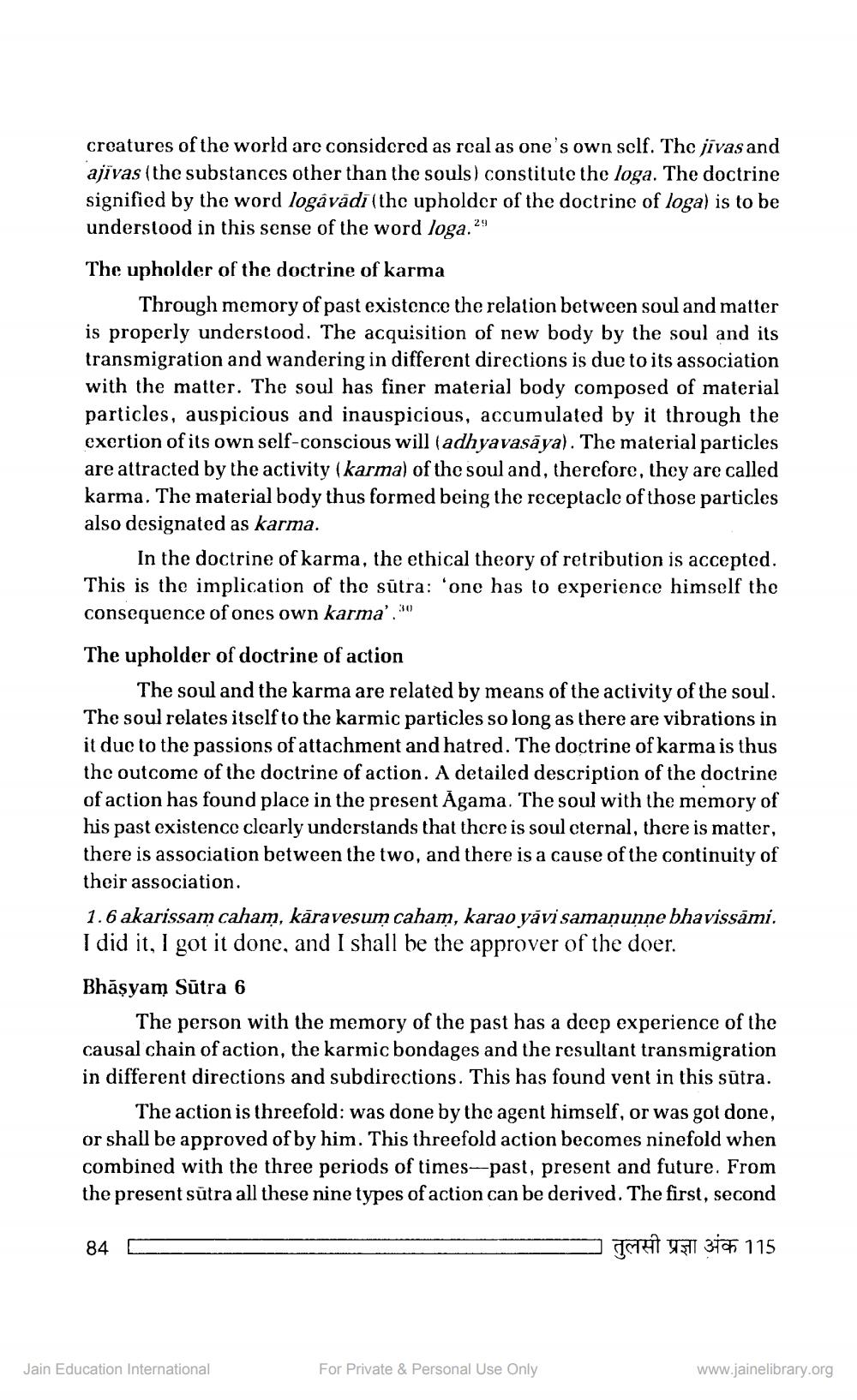________________
creatures of the world are considered as real as one's own self. The jīvas and ajīvas (the substances other than the souls) constitute the loga. The doctrine signified by the word logå vådī (the upholder of the doctrine of loga) is to be understood in this sense of the word loga.29
The upholder of the doctrine of karma
The
Through memory of past existence the relation between soul and matter is properly understood. The acquisition of new body by the soul and its transmigration and wandering in different directions is due to its association with the matter. The soul has finer material body composed of material particles, auspicious and inauspicious, accumulated by it through the exertion of its own self-conscious will (adhyavasāya). The material particles are attracted by the activity (karma) of the soul and, therefore, they are called karma. The material body thus formed being the receptacle of those particles also designated as karma.
In the doctrine of karma, the ethical theory of retribution is accepted. This is the implication of the sutra: 'one has to experience himself the consequence of ones own karma'. 90
The upholder of doctrine of action
The soul and the karma are related by means of the activity of the soul. The soul relates itself to the karmic particles so long as there are vibrations in it due to the passions of attachment and hatred. The doctrine of karma is thus the outcome of the doctrine of action. A detailed description of the doctrine of action has found place in the present Agama. The soul with the memory of his past existence clearly understands that there is soul cternal, there is matter, there is association between the two, and there is a cause of the continuity of their association. 1.6 akarissam caham, kāravesum caham, karao yavi samanunne bhavissāmi. I did it, I got it done, and I shall be the approver of the doer. Bhāsyam Sutra 6
The person with the memory of the past has a deep experience of the causal chain of action, the karmic bondages and the resultant transmigration in different directions and subdirections. This has found vent in this sūtra.
The action is threefold: was done by the agent himself, or was got done, or shall be approved of by him. This threefold action becomes ninefold when combined with the three periods of times-past, present and future. From the present sutra all these nine types of action can be derived. The first, second
84 D
TO
UTI 31 115
Jain Education International
For Private & Personal Use Only
www.jainelibrary.org




